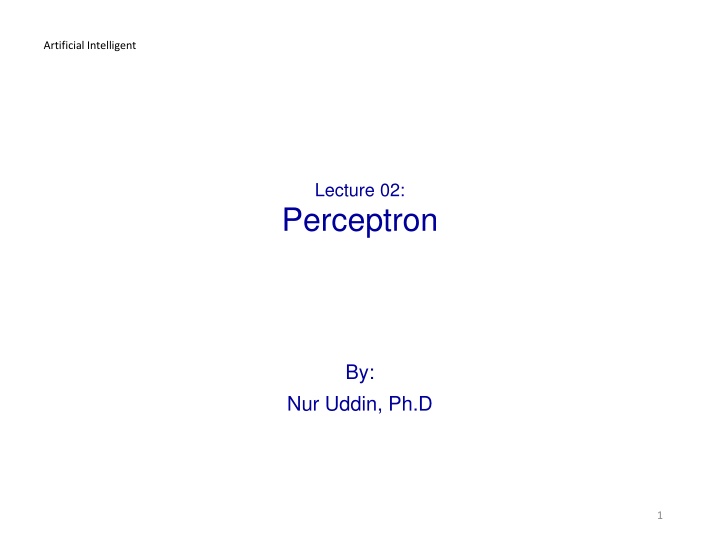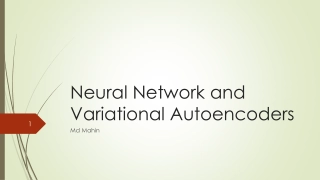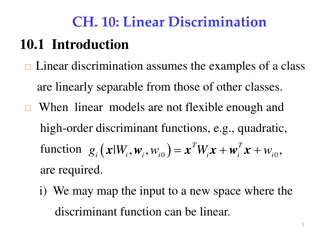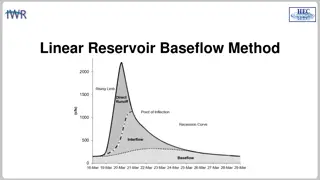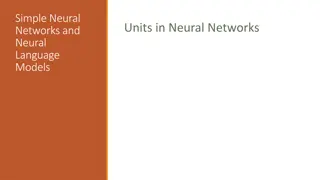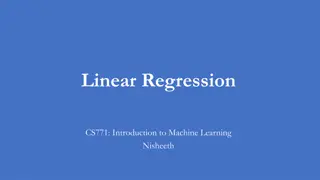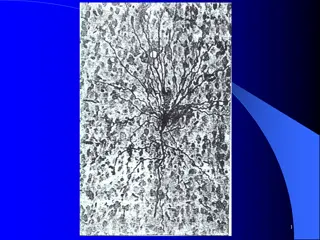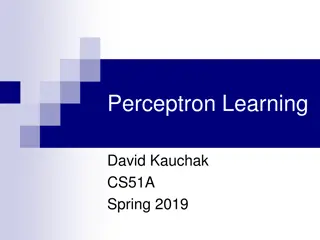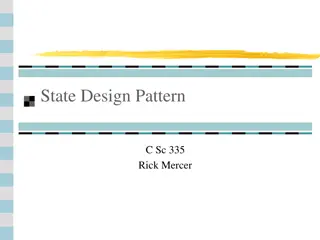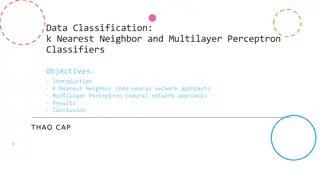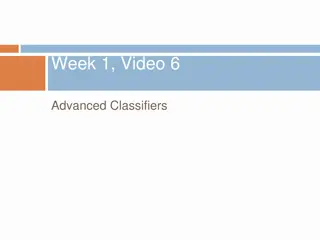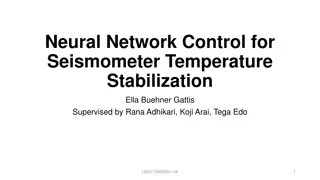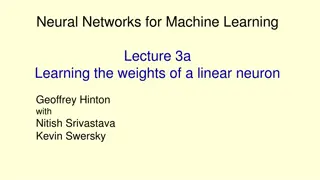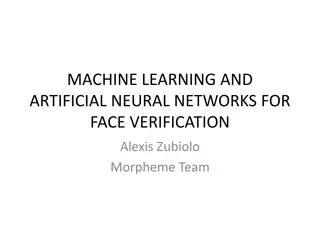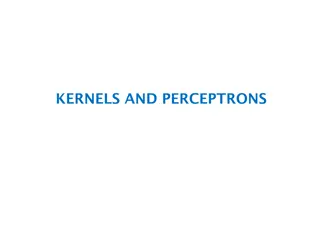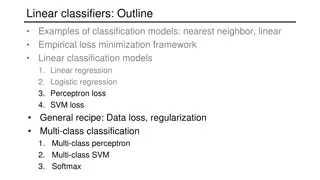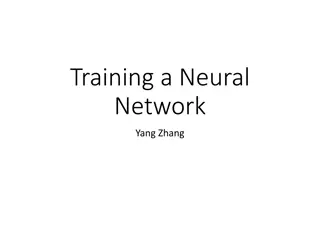Perceptron: Simplest Neural Network for Linear Pattern Classification
In the field of Artificial Intelligence, the Perceptron is a fundamental concept introduced by Rosenblatt in 1958. It serves as a basic neural network used to classify linearly separable patterns. The history of neural networks traces back to the pioneering works of McCulloch, Pitts, and Hebb. This lecture series dives into the structure, applications, and mathematics behind the Perceptron model, shedding light on topics such as activation functions, decision boundaries, and learning algorithms. Explore the foundational aspects of neural networks through the lens of the Perceptron model in this educational journey.
Download Presentation

Please find below an Image/Link to download the presentation.
The content on the website is provided AS IS for your information and personal use only. It may not be sold, licensed, or shared on other websites without obtaining consent from the author.If you encounter any issues during the download, it is possible that the publisher has removed the file from their server.
You are allowed to download the files provided on this website for personal or commercial use, subject to the condition that they are used lawfully. All files are the property of their respective owners.
The content on the website is provided AS IS for your information and personal use only. It may not be sold, licensed, or shared on other websites without obtaining consent from the author.
E N D
Presentation Transcript
Artificial Intelligent Lecture 02: Perceptron By: Nur Uddin, Ph.D 1
History Artificial Intelligent - Lecture 2 2
History Pioneering work on neural network: McCulloch and Pitts (1943) for introducing the idea of neural networks as computing machines. Hebb (1949) for postulating the first rule for self-organized learning. Rosenblatt (1958) for proposing the perceptron as the first model for learning with a teacher (i.e., supervised learning). Artificial Intelligent - Lecture 2 3
Perceptron The perceptron is the simplest form of a neural network. It is used to classify linearly separable patterns. The learning algorithm was developed by Rosenblatt (1958, 1962) for his perceptron brain model. Artificial Intelligent - Lecture 2 4
Linearly Separable Patterns Artificial Intelligent - Lecture 2 5
Perceptron Model Rosenblatt s perceptron is built around a nonlinear neuron, namely, the McCulloch Pitts model of a neuron. Exercise: Calculate the output ! Artificial Intelligent - Lecture 2 6
Mathematics Model of Perceptron Artificial Intelligent - Lecture 2 7
Classification Question 1: How to make classification? Question 2: What is the activation function? Artificial Intelligent - Lecture 2 8
Decision Boundary Artificial Intelligent - Lecture 2 9
Learning Algorithm Artificial Intelligent - Lecture 2 10
Example 1: Restaurants Survey Price Taste Buy ? 10 5 6 Yes 5 7 Yes 8 6 3 No 6 Taste 6 8 Yes 7 3 No 4 7 5 No 2 8 3 No 8 5 No 0 0 2 4 6 8 10 Price 9 6 No 9 9 Yes 10 7 No Artificial Intelligent - Lecture 2 11
Example 1: Restaurants Survey (Contd) Price Taste Buy ? 10 5 6 1 5 7 1 8 6 3 0 6 6 8 1 Taste 7 3 0 4 7 5 0 2 8 3 0 8 5 0 0 0 2 4 6 8 10 9 6 0 Price 9 9 1 10 7 0 Artificial Intelligent - Lecture 2 12
Classification using Perceptron Training Test (Generalization) 10 10 9 9 8 8 7 7 6 6 Taste Taste 5 5 4 4 3 3 2 2 1 1 0 0 0 2 4 6 8 10 0 2 4 6 8 10 Price Price Artificial Intelligent - Lecture 2 13
Example 1: Grading System Mid Final Score Grade Fail 60 50 54 Score = Mid exam: 40% Final exam: 60% Pass 70 60 64 Pass 40 80 64 Pass 60 65 63 Grading system = Pass: score 60 Fail : score < 60 Pass 80 50 62 Fail 70 50 58 Fail 65 55 59 Pass 30 80 60 Fail 80 40 56 Fail 90 30 54 Pass 50 70 62 Artificial Intelligent - Lecture 2 14
Example 1: Grading System Mid Final Score Grade Fail 60 50 54 Score = Mid exam: 40% Final exam: 60% Pass 70 60 64 Pass 40 80 64 Pass 60 65 63 Grading system = Pass: score 60 Fail : score < 60 Pass 80 50 62 Fail 70 50 58 Fail 65 55 59 Pass 30 80 60 Fail 80 40 56 Fail 90 30 54 Pass 50 70 62 Artificial Intelligent - Lecture 2 15
Exercise 1: Airlines Passenger Survey (Economy Class) 1 0.9 0.8 0.7 0.6 Delay 0.5 0.4 0.3 0.2 0.1 0 0 0.2 0.4 0.6 0.8 1 Price Artificial Intelligent - Lecture 2 16
